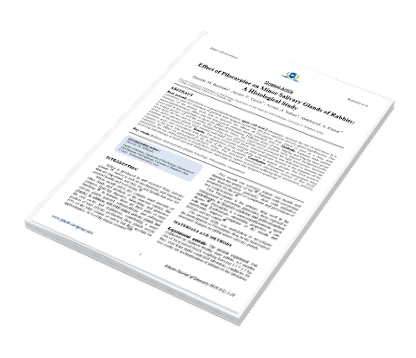Effect of Pilocarpine on Minor Salivary Glands of Rabbits: A Histological Study
DOI:
https://doi.org/10.37376/ljd.v3i1.1843Keywords:
Rabbits, minorsalivary glands, histology, Pilocarpine, vacuolationAbstract
Pilocarpine is a parasympathomimetic agent with mild β-adrenergic increase the rate of salivation. It is
commonly used for treatment of patients with Sjögren'ssyndrome and post radiation salivary gland hypofunction. The
intention of the present work was to describe the effects of Pilocarpine drug which is used as a drug with
parasympathomimetic effect and the histological changes during treatment with it. Methods: Eighteen male rabbits
were used in this experiment to show the effect of Pilocarpine. Different doses of drug 3mg/kg and 5mg/kg were given
to treated groups (A and B) within the therapeutic limits. The experimental animals were injected intraperitoneally
twice daily, for two and six weeks. Samples of the minor salivary glands were processed for light microscopy. Sections
of the minor salivary glands were stained with H&E and PAS stains. Statistical analysis was followed to measure the
diameter of the secretory acini. Results: The most noticeable changes were significant increase in the diameter of the
secretory acini, and vacuolation with foamy appearance of the cells of the acini in treated groups. The PAS positive
reaction in the acini was increased as the dose of the drug increased. Conclusion: Pilocarpine as sialogogues drug
simulates the effect of parasympathomimetic drugs. The structural histological alterations noticed in this study
substantiate the use of Pilocarpine as prophylactic and therapeutic agents in patients suffering from xerostomia, patients
receiving radiotherapy at head and neck malignancies, and some diseases like Sjögren's syndrome
Downloads

Downloads
Published
How to Cite
Issue
Section
License
Copyright (c) 2022 Libyan Journal of Dentistry

This work is licensed under a Creative Commons Attribution-NonCommercial-NoDerivatives 4.0 International License.







